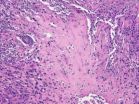(Press-News.org) HACKENSACK, N.J. (July 18, 2011) — Researchers from the John Theurer Cancer Center at Hackensack University Medical Center presented results from 14 cancer-related studies during the recently concluded American Society of Clinical Oncology (ASCO) Annual Meeting, which took place June 3 – 7, 2011 in Chicago. The studies examined new cancer treatments, ways to predict the best treatment outcomes, and patient quality of life issues.
"ASCO is a great venue for sharing best practices and learning about new treatment approaches – we are proud to help contribute by presenting our recent scientific work," said Andre Goy, M.D., M.S., Chairman and Director and Chief of Lymphoma, John Theurer Cancer Center. "Our researchers will keep working to improve oncology and help develop some of the newest approaches to treating cancer. This will remain a priority for our cancer center."
Among other promising research, John Theurer Cancer Center investigators reported on a phase II study of carfilzomib, a new proteasome inhibitor to treat advanced multiple myeloma; the first phase III trial of anti-metabolite clofarabine against acute myelogenous leukemia; application of a new statistical model to predict mantle cell lymphoma survival and guide treatment choices; and a comparison of disease status and satisfaction with care among chronic myeloid leukemia patients.
"The innovative research we conduct brings tomorrow's treatments to our patients today," said Andrew L. Pecora, M.D., F.A.C.P., C.P.E., Chief Innovations Officer and Professor and Vice President of Cancer Services, John Theurer Cancer Center. "We have recently expanded our capabilities through the opening of an extraordinary new research and patient care facility, and it is our belief that this will enable us to further speed the pace of discovery and be even more prolific in our scientific publications."
Highlights of the Theurer Center presentations include:
PX-171-003-A1, an open-label, single-arm, phase (Ph) II study of carfilzomib (CFZ) in patients (pts) with relapsed and refractory multiple myeloma (R/R MM): Long-term follow-up and subgroup analysis.
David S. Siegel, M.D., Ph.D. and colleagues presented findings from a phase II, single-arm open-label study of carfilzomib (CFZ), a novel, highly selective proteasome inhibitor in development for treatment of advanced multiple myeloma. Proteasome inhibitors block the actions of certain proteins (proteasomes) that cancer cells need to survive and multiply. All patients in the study were previously unresponsive to treatment with other combination therapies. Of 257 patients completing the study, the overall response rate was 24% with a median response duration of 7.4 months. The median overall survival was 15.5 months. CFZ as a standalone treatment achieved significant responses in 36% of patients who did not previously respond to treatment with bortezomib and immunomodulatory drugs, including patients with chromosomal abnormalities. CFZ was well tolerated and adverse events were manageable with no new, unexpected, or cumulative toxicities.
Survival outcomes in elderly patients with plasma cell myeloma: The three-decade Eastern Cooperative Oncology Group (ECOG) experience.
Recent landmark papers showed significant improvement in survival rates for patients under 65 years of age with plasma cell myeloma, but not for older patients. To shed new light on progress in treating older individuals, David H. Vesole, M.D., PH.D., F.A.C.P. and colleagues examined data over the last 33 years for previously untreated patients who were treated according to standard European Cooperative Oncology Group protocols during three time periods: 1988-1993, 1994-2000 and 2001-2006. Patients receiving autologous stem cell transplantation were excluded. For patients over 65 years, there was a higher overall survival in those treated 2001-2006 (39%), than in those treated 1988-1993 and 1994-2000 (26% for both groups). These gains were far less than for patients 65 and under (63% in the 2001-2006 group, 35% for 1988-1993 and 32% for 1994-2000). The authors suggest an in-depth review of a number of variables that may contribute to worse survival for older patients, in order to improve the design of future clinical trials.
A new predictive model based on age, pretreatment LDH, and post-therapy PET-CT in patients with MCL treated with dose-intensive strategies.
Anthony Mato, M.D. and a research team from John Theurer Cancer Center conducted a retrospective study examining risk factors associated with survival of patients with mantle cell lymphoma who were treated with dose-intensive strategies and/or high dose therapy with autologous stem cell transplant. The researchers developed an algorithm that enabled them to identify distinct prognostic subgroups, based on three variables: age, levels of LDH enzymes in the blood, and presence of disease on PET scans. With a median follow up at 35 months, they found that age ≥ 60 and the presence of disease on post-treatment PET-CT scans were associated with inferior survival. They state that their prognostic model integrates PET status post therapy with baseline clinical parameters, which might help in early identification of subsets of patients who might be treated with alternate strategies in order to improve outcomes.
The association between the GOELAMS MCL-PET prognostic index and survival in patients treated with rituximab-hypercvad (R-HyCVAD) or high-dose therapy with autologous stem cell rescue (HDT/ASCT).
In a retrospective, single-center study, Tatyana Feldman, M.D. and colleagues from John Theurer Cancer Center looked at the usefulness of an existing prognostic model known as "GOELAMS" in newly diagnosed mantle cell lymphoma patients treated with dose-intensive strategies or high dose therapy with autologous stem cell transplantation. Researchers examined the cases of 83 patients, median age 58, with advanced stage mantle cell lymphoma treated with one of the two therapies. The model was not validated for these patients. The authors conclude that the study highlights the need to develop and validate models that can identify patients treated with dose-intensive approaches who are at risk for poor survival.
Association between chronic myeloid leukemia (CML) treatment responses and patient satisfaction, functioning, and quality of life (QOL): Patient survey results.
Stuart L. Goldberg, M.D. and colleagues assessed patients' awareness of chronic myeloid leukemia (CML) treatment response categorizations and the association between treatment responses and satisfaction, functioning, and quality of life. Patients were invited to participate in an online survey through the Association for Cancer Online Resources; 123 responded. Nearly all reported they were in complete hematological response. In this well-educated population (96% had some college), 90% of patients were aware of the different treatment response categories. However, 71.5% felt CML patients need more information on types of responses, with the desire for information to come from their physicians (67%) versus other staff (28%) or pamphlets (24%). Patients achieving major molecular response to treatment (MMR) had higher overall self- reported health status versus patients in complete cytogenetic response (CCyR). Complete cytogenetic response is the absence of the defective chromosome that causes the disease, while major molecular response is defined as a level of .1 percent or lower of the BCR-ABL oncoprotein as measured by a more sensitive test than traditional cytogenetic analysis. The authors conclude that from the patients' perspective, achievement of MMR is an important milestone associated with improved satisfaction with their physician, medication, daily functioning, and outlook on life. Additional research is needed to assess the best ways to help patients understand different response categories.
Clofarabine plus cytarabine compared to cytarabine alone in older patients with relapsed or refractory (R/R) acute myelogenous leukemia (AML): Results from the phase III CLASSIC 1 trial.
Dr. Goldberg and researchers from multiple cancer centers reported the results of the first phase III, prospective, randomized, blinded trial to evaluate the efficacy and safety of clofarabine (CLO) in combination with ara-C compared to ara-C alone in older adult pts (≥55 yrs) with refractory acute myelogenous leukemia (AML). 320 patients were enrolled. Median overall survival was 6.6 months and 6.4 months in the CLO+ara-C and ara-C alone study arms, respectively. The authors conclude that the study demonstrates that CLO+ara-C significantly improves patients' overall remission rate and event-free survival, with the greatest benefit in six-plus month remission patients, however, these improvements did not translate into a survival benefit compared to ara-C alone. Researchers are continuing long-term survival follow-up.
Other John Theurer Cancer Center research presented at ASCO included:
A phase lb study of oral panobinostat and IV bortezomib in relapsed or relapsed and refractory multiple myeloma. – David S. Siegel, M.D., Ph.D., et. al.
The effect of carfilzomib (CFZ) in patients (Pts) with bortezomib (BTZ)-naive relapsed or refractory multiple myeloma (MM): Updated results from the PX-171-004 study. - David H. Vesole, M.D., PH.D., F.A.C.P., et. al.
Interim results from PX-171-006, a phase (Ph) II multicenter dose-expansion study of carfilzomib (CFZ), lenalidomide (LEN), and low-dose dexamethasone (loDex) in relapsed and/or refractory multiple myeloma (R/R MM). – David S. Siegel, M.D., Ph.D., et. al.
A randomized, multicenter, phase (Ph) III study comparing carfilzomib (CFZ), lenalidomide (LEN), and dexamethasone (Dex) to LEN and Dex in patients (Pts) with relapsed multiple myeloma (MM). – David S. Siegel, M.D., Ph.D., et. al.
Vincristine sulfate liposomes injection (VSLI) "bridging" to potentially curative hematopoietic stem cell transplantation (HSCT) in adults with Philadelphia chromosome negative (Ph-) acute lymphoblastic leukemia (ALL). – Stuart L. Goldberg, M.D., et. al.
A single-arm, open-label, multi-center study of complete molecular response (CMR) in patients with newly diagnosed Philadelphia-chromosome positive (Ph+) chronic myeloid leukemia in chronic phase (CML-CP) treated with nilotinib. – Stuart L. Goldberg, M.D., et. al.
A phase Ib/II open-label study to evaluate the safety and efficacy of TRU-016 in combination with bendamustine versus bendamustine alone in patients with relapsed chronic lymphocytic leukemia. – Andre Goy, M.D., M.S., et. al.
Neoadjuvant treatment of clearly resectable colorectal liver metastases. - Donald A. McCain, M.D., Ph.D.
###
To read the Hackensack University Medical Center ASCO abstracts in full, go to:
http://abstractsearch.asco.org/cgi-bin/ts.pl?index=442064&query=john+theurer+cancer+center&opt=all
About the John Theurer Cancer Center at Hackensack University Medical Center
The John Theurer Cancer Center at Hackensack University Medical Center is New Jersey's largest and most comprehensive center dedicated to the diagnosis, treatment, management, research, screenings, and preventive care as well as survivorship of patients with all types of cancer. The 14 specialized divisions covering the complete spectrum of cancer care have developed a close-knit team of medical, research, nursing, and support staff with specialized expertise that translates into more advanced, focused care for all patients. Each year, more people in the New Jersey/New York metropolitan area turn to the John Theurer Cancer Center for cancer care than to any other facility in New Jersey. Housed within a 775-bed not-for-profit teaching, tertiary care, and research hospital, the John Theurer Cancer Center provides state-of-the-art technological advances, compassionate care, research innovations, medical expertise, and a full range of after care services that distinguish the John Theurer Cancer Center from other facilities. For more information please go to jtcancercenter.org.
Media Contact
Amy Leahing
305.458.0599
amy.leahing@zibbel.com
John Theurer Cancer Center researchers shared 14 leading edge studies at recent ASCO meeting
2011-07-19
ELSE PRESS RELEASES FROM THIS DATE:
Click chemistry with copper -- a biocompatible version
2011-07-19
Biomolecular imaging can reveal a great deal of information about the inner workings of cells and one of the most attractive targets for imaging are glycans – sugars that are ubiquitous to living organisms and abundant on cell surfaces. Imaging a glycan requires that it be tagged or labeled. One of the best techniques for doing this is a technique called click chemistry. The original version of click chemistry could only be used on cells in vitro, not in living organisms, because the technique involved catalysis with copper, which is toxic at high micromolar concentrations. ...
Cancer stem cells recruit normal stem cells to fuel ovarian cancer, U-M study finds
2011-07-19
ANN ARBOR, Mich. — Researchers at the University of Michigan Comprehensive Cancer Center have found that a type of normal stem cell fuels ovarian cancer by encouraging cancer stem cells to grow.
Cancer stem cells are the small number of cells in a tumor that drive its growth and spread. Traditional cancer treatments do not kill these cells, which is why cancer treatments often fail.
In a study published online in the Journal of Clinical Investigation, researchers looked in ovarian tissue at the mesenchymal stem cells, which are normal cells found throughout the body. ...
New therapy provides hope for millions of people suffering from bowel incontinence
2011-07-19
CHICAGO- A new procedure is now available for the treatment of chronic bowel incontinence, a disorder impacting the lives of more than 18 million Americans. The treatment, called InterStim® Therapy is a minimally invasive procedure which uses electrical impulses to stimulate the sacral nerve and improve muscle function. It is one of the only effective long-term treatments for bowel incontinence available to patients and Northwestern Memorial Hospital is one of the first medical centers in the country to offer the procedure.
"Bowel control problems can have a significant, ...
Research identifies genes vital to preventing childhood leukemia
2011-07-19
Researchers at The University of Western Ontario have identified genes that may be important for preventing childhood leukemia. Acute lymphoblastic leukemia (ALL) is a cancer of the blood that occurs primarily in young children. It's frequently associated with mutations or chromosomal abnormalities that arise during embryonic or fetal development. Working with mice, researchers led by Rodney DeKoter identified two key genes that appear essential in the prevention of B cell ALL, the most common form of ALL in children. The study is published online in Blood, the Journal ...
Grand Cayman blue iguana: Back from the brink of extinction
2011-07-19
While thousands of species are threatened with extinction around the globe, efforts to save the Grand Cayman blue iguana represent a rarity in conservation: a chance for complete recovery, according to health experts from the Wildlife Conservation Society's Bronx Zoo and other members of the Blue Iguana Recovery Program.
Coordinated by the National Trust for the Cayman Islands, the Blue Iguana Recovery Program—a consortium of local and international partners—has successfully released more than 500 captive-bred reptiles since the initiative's inception in 2002, when the ...
Preschool-age kids in different countries improve academically using self-regulation game
2011-07-19
Children who regularly participated in a Simon Says-type game designed to improve self-regulation – called the Head-Toes-Knees-Shoulders task – may have better math and early literacy scores.
The study found that the higher academic outcomes associated with the game, which emphasizes careful listening and following instructions, does not just benefit students in the United States, but also benefits children tested in Taiwan, China and South Korea.
More than 800 preschool age children ages 3-6 years old in the four countries participated in the study, which was just ...
IADR/AADR publish study on use of Twitter for public health surveillance of dental pain
2011-07-19
Alexandria, VA, USA – The microblogging service Twitter is a new means for the public to communicate health concerns and could afford health care professionals new ways to communicate with patients. With the growing ubiquity of user-generated online content via social networking Web sites such as Twitter, it is clear we are experiencing a revolution in communication and information sharing. In a study titled "Public Health Surveillance of Dental Pain via Twitter," published in the Journal of Dental Research—the official publication of the International and American Associations ...
Solar Panels Keep Buildings Cool
2011-07-19
Those solar panels on top of your roof aren't just providing clean power; they are cooling your house, or your workplace, too, according to a team of researchers led by Jan Kleissl, a professor of environmental engineering at the UC San Diego Jacobs School of Engineering.
In a study in an upcoming issue of the journal Solar Energy, Kleissl and his team published what they believe are the first peer-reviewed measurements of the cooling benefits provided by solar photovoltaic panels. Using thermal imaging, researchers determined that during the day, a building's ceiling ...
New grant supports Hastings work on ethics of medical research with animals
2011-07-19
(Garrison, NY) The Esther A. and Joseph Klingenstein Fund awarded The Hastings Center a $159,000 grant to explore the ethical, scientific, and legal issues on using animals in medical research and on the prospects for using alternatives to animal models.
The project comes at a time when arguments about animal experimentation are changing in fundamental and profound ways. Scientific journals and some biomedical researchers are calling for increased public engagement and education about animal research. The longstanding view that one is either pro-medical progress or pro-animal ...
8-question survey can help predict post-traumatic stress disorder
2011-07-19
A simple eight-question survey administered soon after injury can help predict which of the 30 million Americans seeking hospital treatment for injuries each year may develop depression or post-traumatic stress, report Therese S. Richmond, PhD, CRNP, associate professor at the University of Pennsylvania School of Nursing, and her colleagues in General Hospital Psychiatry.
"Depression and PTSD exert a significant, independent, and persistent effect on general health, work status, somatic symptoms, adjustment to illness, and function after injury," the authors wrote, also ...




